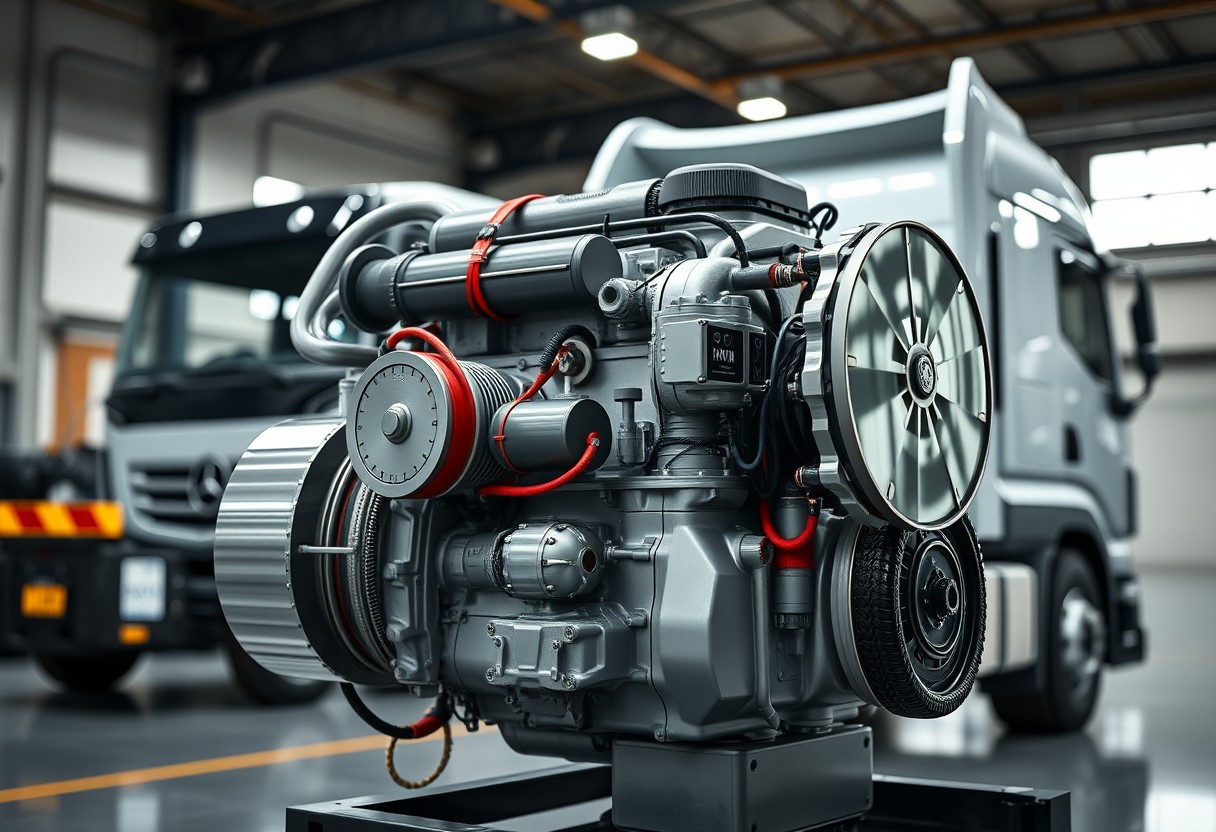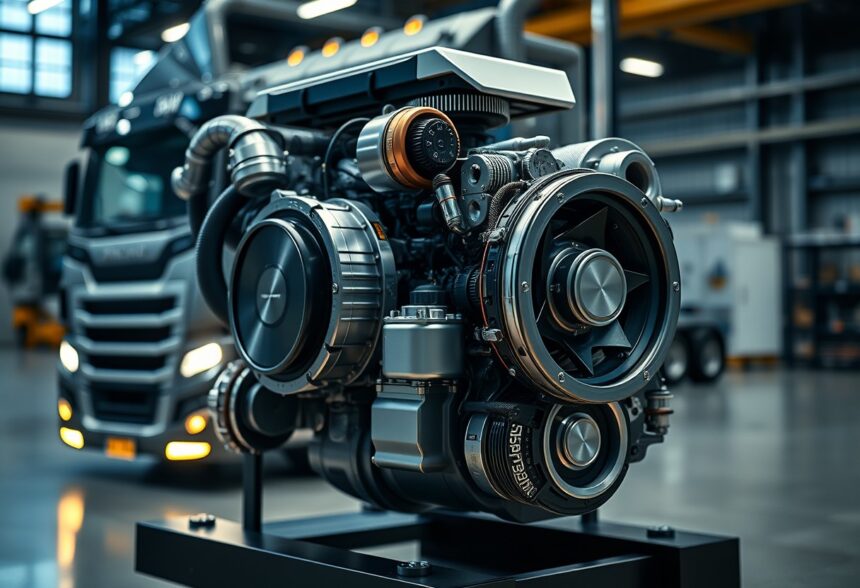Over the past few years, advancements in engine technology have garnered your attention, particularly with innovations promising to revolutionize the transportation sector. One such development is the Hyliion Karno Engine, which claims to employ unique thermal efficiency techniques. In this blog post, you will investigate deeper into whether this engine qualifies as truly new technology or if it is simply an evolution of existing systems. Join us as we break down its mechanics, innovations, and potential impact on the future of sustainable transport.
Is Hyllion’s Karno Engine New Technology
Your exploration of the Hyliion Karno Engine will unveil a ground breaking approach to efficiency in the transportation sector. This innovative engine aims to redefine energy conversion and utilization by combining advanced technology with environmental consciousness. Designed to integrate seamlessly into various transportation systems, the Karno Engine focuses on drastically reducing emissions while enhancing fuel economy, making it a noteworthy contender in the future of sustainable transport solutions.
Design and Components
Hyliion has meticulously crafted the Karno Engine to incorporate a unique design, showcasing a compact architecture that leverages advanced materials for improved durability and performance. Its primary components include a thermal energy conversion system, which operates at higher efficiencies than conventional engines, and an intelligent control unit that optimizes operation based on real-time data. This design philosophy ensures that the engine remains versatile and easily adaptable to different vehicle formats.
Operational Mechanism
Hyliion’s operational mechanism is centered around a novel thermodynamic cycle that maximizes energy extraction from fuel sources while minimizing waste. By utilizing a combination of heat recovery, high-efficiency power generation, and state-of-the-art control systems, the Karno Engine can achieve exceptional performance under varied load conditions. This sophisticated system allows for enhanced user experience and operational savings.
The Karno Engine operates by converting thermal energy from combustion into mechanical work with unprecedented efficiency. Its design emphasizes a continuous cycle of heat exchange, where heat produced during fuel combustion is aptly captured and utilized to propel the vehicle. This innovative approach not only maximizes energy output but also significantly reduces carbon emissions, positioning the Karno Engine as a leading edge in sustainable engine technology for the transportation industry.
Comparison to Traditional Engines
Clearly, understanding the differences between the Hyliion Karno engine and traditional engines is imperative for evaluating advancements in automotive technology. The following comparison highlights key attributes that may influence your choice of engine technology in the future.
| Attribute | Hyliion Karno Engine |
|---|---|
| Efficiency | Higher thermal efficiency |
| Emissions | Reduced emissions |
| Maintenance | Lower maintenance costs |
Efficiency Metrics
For evaluating efficiency, the Hyliion Karno engine showcases notable improvements over traditional internal combustion engines, achieving thermal efficiencies exceeding 60%. This enhancement translates to better fuel utilization, resulting in fewer resources consumed for the same energy output.
Environmental Impact
The environmental benefits of adopting the Hyliion Karno engine are significant, particularly in reducing greenhouse gas emissions. You can expect a decreased carbon footprint compared to legacy engines while supporting global sustainability efforts.
Environmental improvements are critical as society grapples with climate change. By choosing the Hyliion Karno engine, you contribute to minimizing air pollution and reliance on fossil fuels. This forward-thinking choice not only benefits the planet but also aligns with evolving regulations aimed at promoting cleaner technologies.

Technological Innovations
If you’re curious about the cutting-edge advancements in the Hyliion Karno Engine, you’ll find that this technology pushes the boundaries of conventional engineering. By integrating innovative concepts, Hyliion aims to redefine the performance and efficiency of powertrains for commercial vehicles, demonstrating a commitment to sustainability and effectiveness.
Novel Materials and Engineering
The use of novel materials in the Hyliion Karno Engine is a game changer. It employs advanced composites and lightweight materials, which not only reduce weight but also enhance durability and efficiency, helping to improve your vehicle’s overall performance and fuel economy.
Energy Recovery Systems
Systems designed for energy recovery play a crucial role in the Karno Engine’s functionality. By capturing and reusing energy that would otherwise be lost during operation, these systems significantly boost efficiency and reduce emissions, creating a more sustainable driving experience for you and your business.
Understanding how energy recovery systems work can provide you with greater insight into the Hyliion Karno Engine’s capabilities. These systems utilize innovative technologies that harness waste energy generated during braking or acceleration, converting it back into usable power. Incorporating such advancements allows the engine to operate more efficiently, ultimately extending the lifespan of your vehicle and lowering operational costs, making it a wise investment for the future of transportation.
Industry Implications
Unlike traditional engines that rely solely on fossil fuels, the Hyliion Karno Engine presents an innovative approach that could significantly alter the landscape of transportation and logistics industries. By embracing alternative energy sources, companies can enhance their sustainability efforts while addressing rising fuel costs and regulatory pressures. This shift not only aligns with growing consumer preferences for eco-friendly products but also positions businesses to stay ahead in a competitive market continually evolving toward greener technologies.
Market Potential
For businesses driven by operational efficiency and environmental sustainability, the market potential for the Hyliion Karno Engine is substantial. As industries increasingly focus on reducing emissions and lowering lifetime costs, adopting such advanced technologies can provide a distinct competitive edge. Companies that invest now may capture an emerging market of eco-conscious consumers and meet the rising demand for clean transportation solutions.
Regulatory Considerations
Regulatory frameworks around emissions and fuel standards will heavily influence the adoption of the Hyliion Karno Engine. As authorities impose stricter environmental regulations, your organization could face increased compliance costs or penalties if you remain reliant on conventional engines. Understanding and navigating these regulations is crucial for successfully implementing the Karno Engine and ensuring alignment with future legislation.
To ensure your investment in the Hyliion Karno Engine pays off, it’s vital to stay informed about evolving regulatory landscapes. Engaging with industry bodies and regulatory authorities can provide insights into upcoming changes and compliance pathways. By proactively addressing regulatory considerations, you position your business to take advantage of incentives for cleaner technologies, further enhancing the viability of the Karno Engine in your operations.
Challenges and Limitations
To fully understand the potential of the Hyliion Karno engine, you must also consider the challenges and limitations it faces. As with any new technology, transitioning from development to mass adoption is fraught with obstacles, whether they be technical, financial, or societal. You need to be aware that overcoming these hurdles will be pivotal in determining the engine’s long-term viability and success in the market.
Technical Hurdles
Any innovative technology, including the Karno engine, inevitably encounters technical hurdles that can hinder its development. Issues such as efficiency optimization, durability, and integration within current vehicle systems may arise. Additionally, you should be prepared for the potential cost implications that could accompany these technical challenges, which may affect the engine’s commercial feasibility.
Public Perception and Adoption
Perception plays a crucial role in the widespread adoption of new technologies like the Karno engine. You will likely find that initial skepticism regarding performance, reliability, and environmental impact can significantly influence public acceptance. Understanding and addressing these perceptions will be imperative for Hyliion to foster trust and engagement among consumers and industry stakeholders alike.
Plus, the current landscape of renewable energy technologies is continuously evolving, bringing heightened competition and varied opinions. You may notice that potential customers might be hesitant to abandon traditional fuels in favor of unproven alternatives. Therefore, it becomes critical for Hyliion to leverage robust marketing strategies, provide transparent information, and illustrate the tangible benefits of the Karno engine to convince you and other stakeholders of its potential advantages. Your willingness to embrace this technology will ultimately underpin its success in the market.
Future Outlook
Once again, the Hyliion Karno Engine presents a transformative potential in the trucking industry. As demand for more efficient, environmentally friendly solutions increases, the adoption of hybrid technology like the Karno Engine may prove pivotal. It encourages a shift towards sustainable energy, compelling manufacturers and fleets to integrate such innovative systems into their operations, ultimately redefining the future of transportation.
Emerging Trends
For you as a stakeholder in transportation, the emergence of electric and hybrid technologies signifies a significant shift in market dynamics. The growing focus on sustainability and regulatory changes will likely drive hybrid solutions further into the spotlight. Understanding these trends can help you anticipate changes and make informed decisions for your operations.
Research and Development Directions
An increased focus on research and development will be crucial for advancing the Karno Engine’s capabilities. You should consider how ongoing innovations, such as enhancements in battery technology and energy efficiency, play a role in improving overall performance. This continuous evolution will determine the future viability of the Karno Engine and similar technologies.
Trends in research and development aim at refining the Hyliion Karno Engine, specifically looking into optimizing thermal management systems and enhancing emissions reduction capabilities. Collaborations between academic institutions and industry leaders are expected to yield breakthroughs that further increase efficiency. As you follow these advancements, staying informed about these directions could provide insights into how your fleet can become more competitive and environmentally responsible.
Summing up
To wrap up, you now have a comprehensive understanding of the Hyliion Karno Engine and its innovative approach to energy efficiency in transportation. While it incorporates existing principles of thermodynamics and engineering, its unique hybrid technology aims to revolutionize how companies can reduce emissions and operational costs. As you consider future investments or applications, it’s imperative to weigh the potential benefits of this emerging technology against its practical implementation in the current market landscape.
FAQ
Q: What is the Hyliion Karno Engine and how does it work?
A: The Hyliion Karno Engine is an innovative powertrain technology developed by Hyliion that aims to enhance fuel efficiency and reduce emissions in heavy-duty vehicles. Unlike traditional engines that rely solely on internal combustion, the Karno Engine utilizes a unique thermodynamic cycle that recovers waste heat to generate additional energy. This process allows the engine to operate at higher efficiency and optimize performance, making it a viable solution for meeting the increasing regulatory demands for sustainability in the transportation sector.
Q: Is the Hyliion Karno Engine considered a groundbreaking advancement in engine technology?
A: Yes, the Hyliion Karno Engine is regarded as a significant advancement in engine technology. It combines existing thermodynamic principles with modern engineering to offer a more efficient alternative to conventional diesel engines. The Karno Engine utilizes a thermally activated cycle that improves overall efficiency by recovering and utilizing heat that would otherwise be wasted. Furthermore, its modular design allows for easier integration into existing vehicle platforms, potentially revolutionizing how fleets operate and contributing to reduced environmental impact.
Q: How does the Hyliion Karno Engine compare to traditional diesel engines in terms of environmental impact?
A: The Hyliion Karno Engine significantly outperforms traditional diesel engines regarding environmental impact. By enhancing fuel efficiency and reducing CO2 emissions through its innovative design, the Karno Engine contributes to lower greenhouse gas emissions, making it a more eco-friendly option. Additionally, the engine’s capabilities for waste heat recovery enable it to operate with less fuel, further reducing its carbon footprint. This aligns with global trends towards sustainable transport solutions and offers fleet operators a way to comply with stricter emissions regulations while lowering operational costs.





